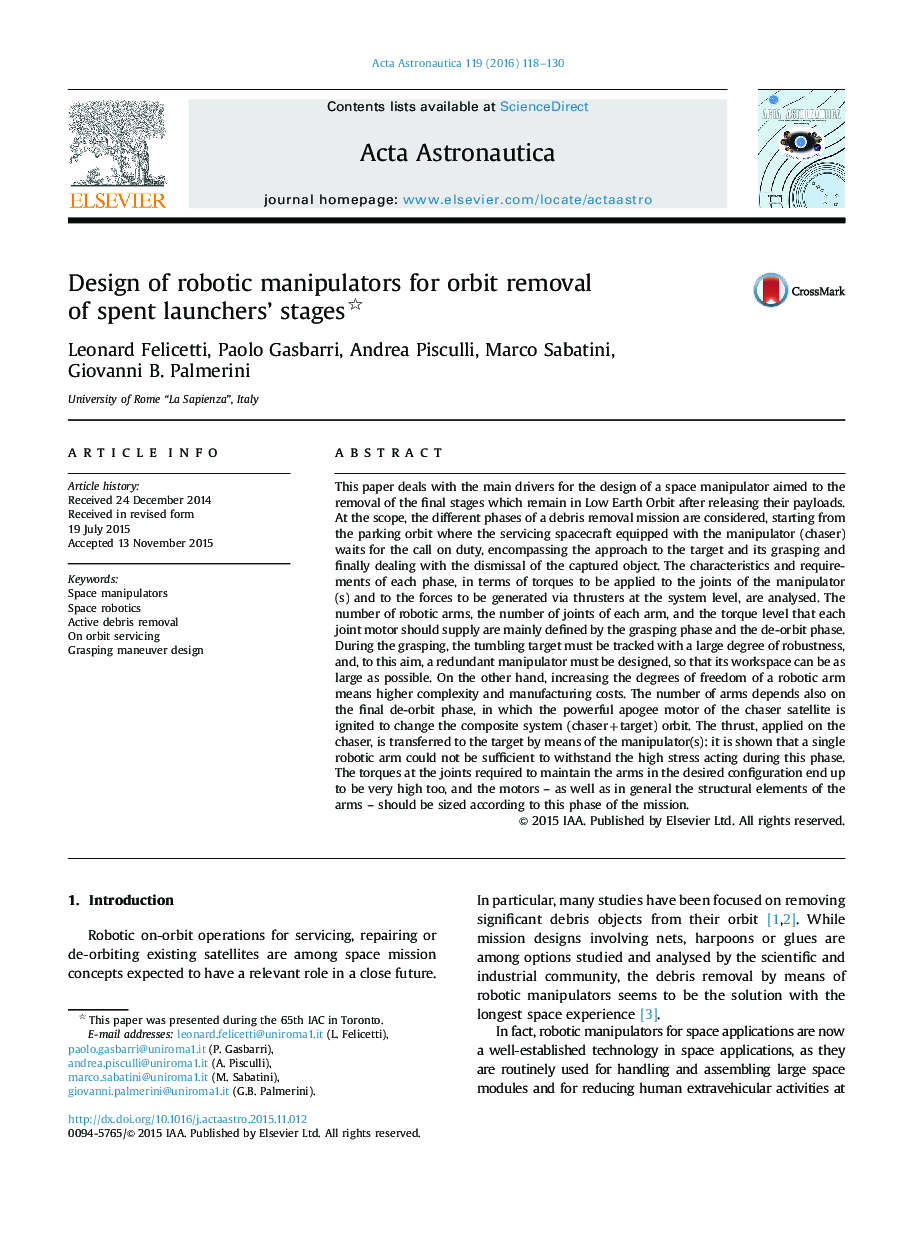| کد مقاله | کد نشریه | سال انتشار | مقاله انگلیسی | نسخه تمام متن |
|---|---|---|---|---|
| 8056364 | 1519935 | 2016 | 13 صفحه PDF | دانلود رایگان |
عنوان انگلیسی مقاله ISI
Design of robotic manipulators for orbit removal of spent launchers' stages
ترجمه فارسی عنوان
طراحی منوی روباتیک برای حذف مدار از مراحل پرتاب رادیویی
دانلود مقاله + سفارش ترجمه
دانلود مقاله ISI انگلیسی
رایگان برای ایرانیان
کلمات کلیدی
موضوعات مرتبط
مهندسی و علوم پایه
سایر رشته های مهندسی
مهندسی هوافضا
چکیده انگلیسی
This paper deals with the main drivers for the design of a space manipulator aimed to the removal of the final stages which remain in Low Earth Orbit after releasing their payloads. At the scope, the different phases of a debris removal mission are considered, starting from the parking orbit where the servicing spacecraft equipped with the manipulator (chaser) waits for the call on duty, encompassing the approach to the target and its grasping and finally dealing with the dismissal of the captured object. The characteristics and requirements of each phase, in terms of torques to be applied to the joints of the manipulator(s) and to the forces to be generated via thrusters at the system level, are analysed. The number of robotic arms, the number of joints of each arm, and the torque level that each joint motor should supply are mainly defined by the grasping phase and the de-orbit phase. During the grasping, the tumbling target must be tracked with a large degree of robustness, and, to this aim, a redundant manipulator must be designed, so that its workspace can be as large as possible. On the other hand, increasing the degrees of freedom of a robotic arm means higher complexity and manufacturing costs. The number of arms depends also on the final de-orbit phase, in which the powerful apogee motor of the chaser satellite is ignited to change the composite system (chaser+target) orbit. The thrust, applied on the chaser, is transferred to the target by means of the manipulator(s): it is shown that a single robotic arm could not be sufficient to withstand the high stress acting during this phase. The torques at the joints required to maintain the arms in the desired configuration end up to be very high too, and the motors - as well as in general the structural elements of the arms - should be sized according to this phase of the mission.
ناشر
Database: Elsevier - ScienceDirect (ساینس دایرکت)
Journal: Acta Astronautica - Volume 119, FebruaryâMarch 2016, Pages 118-130
Journal: Acta Astronautica - Volume 119, FebruaryâMarch 2016, Pages 118-130
نویسندگان
Leonard Felicetti, Paolo Gasbarri, Andrea Pisculli, Marco Sabatini, Giovanni B. Palmerini,
